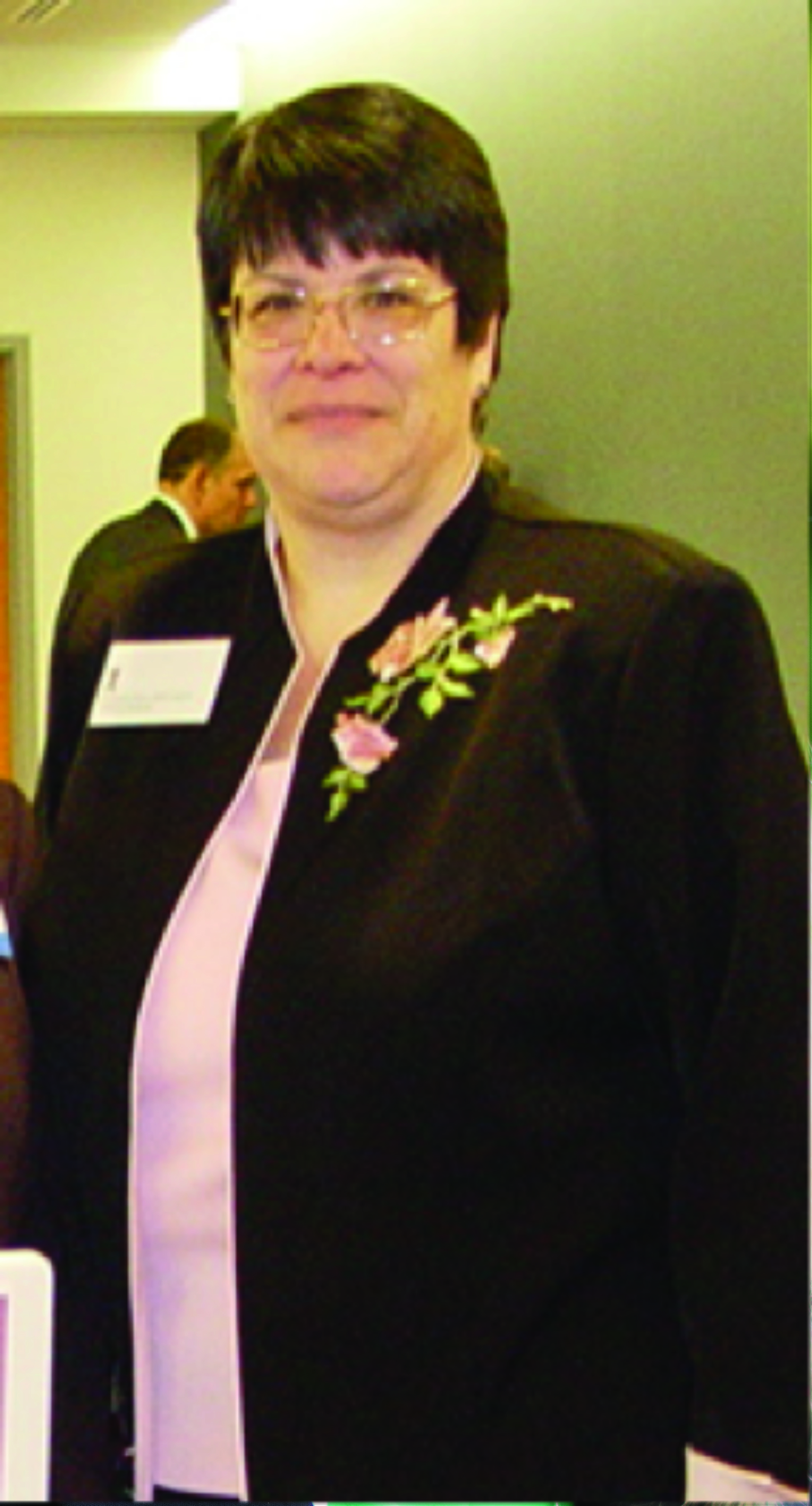First-Line Osimertinib for Metastatic Non-Small Cell Lung Cancer
Lung cancer is the second most common cancer in both men and women (https://www.cancer.org/cancer/non-small-cell-lung-cancer/about/key-statistics.html) (after skin cancer) and is the leading cause of cancer death among both men and women. Histology has become an important determinant in choosing therapy for various types of cancer, including non-small cell lung cancer (NSCLC). Currently, biomarker testing is the standard of care in lung cancer; with biomarker testing, patients likely to respond to targeted therapy can be identified (http://ascopubs.org/doi/10.1200/JCO.2012.45.3753). As the number of targeted agents continues to increase, so does the demand for continued biomarker testing and adequate tumor tissue samples.
Prior to treatment initiation, every member of the clinical team should be aware of a patient’s history, which specific tests are needed, and in what order they must be completed for efficiency. For example, testing for programmed death-ligand 1 (PD-L1) can take one to two days but epidermal growth factor receptor (EGFR) mutation testing can take 10 days or more. Implementing reflex testing at diagnosis may shorten testing time and also preserve tissue.
Numerous biomarker tests are available to determine the best treatment options for patients with NSCLC. In patients with NSCLC, EGFR mutations are the most common genetic aberrations influencing treatment decisions. Those mutations to EGFR can predict what types of drugs would be best to treat lung cancer.
U.S. Food and Drug Administration (FDA)-approved tests to identify specific EGFR mutations include:
- Therascreen® EGFR RGQ PCR: Key mutations include exon 19 deletions and L858R.
- Cobas® EGFR Mutation Test v2: Key mutations include exon 19 deletions, L858R, and T790M.
- Oncomine™ Dx Target Test: Key mutations include exon 19 deletions and L858R.
- FoundationOne CDx™: Key mutations include exon 19 deletions, L858R, and T790M.
Tagrisso® (osimertinib) is a third-generation EGFR tyrosine kinase inhibitor (TKI) and a first-line treatment for patients with metastatic NSCLC whose tumors have EGFR exon 19 deletions or exon 21 L858R mutations (as detected by an FDA-approved test). Osimertinib is also a treatment option for patients with metastatic EGFR T790M mutation-positive NSCLC (as detected by an FDA-approved test), whose disease has progressed on or after EGFR-TKI therapy.
Osimertinib’s approval as a first-line treatment was based on the FLAURA trial, a randomized, double-blind, phase III trial of osimertinib versus gefitinib or erlotinib (referred in the study as “EGFR-TKI comparator”) in patients with metastatic NSCLC who had not received previous systemic treatment for metastatic disease (Soria et al., 2018).
All patients must have had documented EGFR mutation to be included in the trial, and patients were randomized 1:1 to osimertinib (80 mg orally once daily, n = 279) versus gefitinib (250 mg orally once daily, n = 183) or erlotinib (150 mg orally once daily, n = 94) until disease progression or unacceptable toxicity occurred.
The major efficacy outcome was progression-free survival. Results showed that osimertinib reduced the relative risk of progression or death (https://www.nejm.org/doi/full/10.1056/NEJMoa1713137) by 54% versus the EGFR-TKI comparator (Soria et al., 2018).
Warnings and precautions for osimertinib include interstitial lung disease/pneumonitis, heart rate-corrected QT interval prolongation, cardiomyopathy, keratitis, and embryo-fetal toxicity. The most common adverse reactions (≥ 20%) in patients treated with osimertinib were diarrhea (58%), rash (58%), dry skin (36%), nail toxicity (35%), stomatitis (29%), fatigue (21%), and decreased appetite (20%).
Adverse reactions occurring in ≥ 10% of patients treated with osimertinib were diarrhea, stomatitis, nausea, constipation, vomiting, rash, dry skin, nail toxicity, decreased appetite, pruritus, cough, dyspnea, headache, prolonged QT interval, fatigue, pyrexia, and upper-respiratory tract infection.
Serious adverse reactions were reported in 4% of patients treated with osimertinib. The most common serious adverse reactions (https://www.tagrisso.com/) (≥ 1%) were pneumonia (2.9%), interstitial lung disease/pneumonitis (2.1%), and pulmonary embolism (1.8%).
Visit the AstraZeneca website for complete important safety information (https://www.tagrisso.com/).

Q&A With the Experts
Q: With so many new therapies with biomarkers coming out each year—and this is a field that continues to grow—how do you help your patients navigate their testing journey to ensure that they’re getting the right test with the right treatment?
Eaby-Sandy: A lot of new therapies pertain to different biomarkers. The newest is probably drugs to target B-RAF in non-small cell lung cancer. But we also have ROS1, ALK, and EGFR. Those are the four categories.
Two of those categories have several drugs: the ALK and the EGFR. “Journey” is a good word to use because testing is really difficult—the whole process of making sure the right tests have been done and the results are received. A patient may start on the right drug and then you may have progression, in which you may need testing again.
It really is a journey that’s multidisciplinary, between not just the patient and the oncologist, but the pathologist, the pulmonologist, and the nurse navigator.

Q: In this presentation, you discussed how to ensure proper communication among all multidisciplinary team (MDT) stakeholders. What resources did you use to start that whole process, or who did start that process?
Eaby-Sandy: Proper communication along the multidisciplinary staff is, again, very hard. We rely on nurse navigators heavily in this situation. At Penn, where I work, we actually have a tissue navigator who oversees where we can email or send an order. The tissue navigator is in charge of procuring the tissue, whether it’s here at Penn or from the outside: getting it here, getting the tissue that we need, making sure the proper tests are run, and then getting us the results of that.
Q: What are your thoughts on the advancements of treating lung cancer and using biomarkers to develop a more targeted therapy?
Eaby-Sandy: It’s great. It’s the future of how we treat cancer in general. It gives us the ability to identify a driver mutation or even a biomarker, such as PD-L1 expression, and then use a drug that targets that process, which tends to be more effective. In every study, it’s been more effective than chemotherapy and usually less toxic than chemotherapy, with better progression-free survival and overall survival.
This is the way we want to treat cancer in general. I think lung cancer is really leading the charge in this category and we are just breaking the ice. I think we’re going to find a lot more and develop drugs that target these pathways when we find them, so this is the future of where things are going.
Tucci: I think it’s a necessary place to go. The more we know about genetics and genomics, the better off we’re going to be. I do understand that by using biomarkers we may be identifying drugs that have more difficult side effects to deal with or fewer side effects, but that happens no matter what drug is created. It’s a matter of just keeping up with what we’re using, why we’re using it, and what are the side effects to be able to treat our patients appropriately—but also to teach our patients appropriately.
Q: Why is it important to have a treatment like osimertinib available?
Eaby-Sandy: It’s targeting the mechanism that’s driving your cancer to grow. If you can identify why your cancer is growing and you can give a drug that targets that process—which again, the whole idea of targeting is not hitting good and normal cells—then you can decrease toxicity while hitting your target, and hopefully kill the cancer.
Tucci: The drugs that we have now that are considered “standard treatment” are good, but they’re not great. What we need, in my opinion as a nurse who’s been in the field of oncology for more than 30 years, is to keep moving forward. By using standard drugs, we are not moving forward but standing still.
Q: How has osimertinib changed the treatment paradigm for NSCLC?
Eaby-Sandy: For non-small cell lung cancer with EGFR mutations, which is present in about 15% of the American population (and if you have identified the EGFR mutation), osimertinib has emerged now as a leading frontline treatment against other first-line EGFR inhibitors to have a significant improvement in the progression-free survival.
The data are significantly better in the first-line setting for the EGFR mutated population. The toxicity profile also has been favorable, especially from a skin toxicity standpoint.
Tucci: Because we’re still dealing with this drug in the metastatic setting, it gives my patients with advanced cancers a remarkable sense of hope, which we couldn’t necessarily give them before. We always tried to keep them hopeful and say, “Well, we’re going to switch this, or we’re going to shuffle the drugs around a little bit and see what happens.” This gives them something totally new and different where we can show them the numbers and say, “Look, it’s working, and we need to try it with you and see if it’s going to work for you too.”
Q: What has been your experience working with osimertinib?
Eaby-Sandy: Osimertinib is a pill that you take once a day. That’s another nice thing: one pill once a day,
as opposed to some of the targeted therapies with several different pills that are taken several times a day. That’s good for adherence.
The experience has been pretty good. It is a targeted therapy, so it can cause some rash and diarrhea, which are the two most common side effects of the EGFR inhibitors as a class. But the rash, especially the acne-type rash that we see typically with EGFR inhibitors, the grade 3/4 acne-prone rash, may be less than it is with most of the other EGFR inhibitors.
The diarrhea level is about the same as other EGFR inhibitors. Other skin toxicities like dry skin, itching, paronychia—they tend to be about the same as the other EGFR inhibitors. I think if you ask patients receiving the other first-line EGFR inhibitors, rash is usually their most bothersome side effect.
Q: It seems like NSCLC has had a lot of advancements with targeted therapy, more so than some other cancers.
Tucci: We absolutely have and that’s a good thing, because for the longest time we didn’t have anything. There were just standard chemotherapies and if it worked, great. If it didn’t, oh well. It’s nice to have these biomarkers available to us and these targeted therapies built off the biomarkers, so that every step is a step forward. They may be baby steps in some cases, and they may be giant steps in other cases, but they are steps forward—which is a big thing for those of us who are working in pulmonary to be able to say.
Beth Eaby-Sandy, MSN, CRNP, OCN,® was a speaker at the 43rd Annual ONS Congress in Washington, DC, and is a nurse practitioner in the Abramson Cancer Center at the University of Pennsylvania in Philadelphia. Her practice focuses primarily on lung cancer. She speaks nationally on the topics of lung cancer and supportive care topics associated with lung cancer, such as dermatologic toxicities of cancer treatments and chemotherapy-induced nausea and vomiting (CINV). She is also active with writing and editing, and active with Journal of the Advanced Practitioner in Oncology and International Association for the Study of Lung Cancer organizations. Eaby-Sandy received no compensation for her contribution to this initiative.
Rosemarie Tucci, MSN, RN, AOCN®, is an ONS member who develops and currently coordinates care of patients referred to the MLH Pulmonary Nodule Program that oversees follow-up care for patients with identified incidental nodule findings. She previously served as the supervising administrator for the Community Clinical Oncology Program genetics program and the Cancer Registry. She also managed several clinical trials of new therapeutic agents for cancer. She received compensation for her contribution to this initiative.
